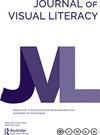Contemporary ways of seeing: exploring how smartphone cameras shape visual culture and literacy
Q1 Arts and Humanities
引用次数: 0
Abstract
Abstract Visual language and culture are co-constitutive and constantly evolving. This transformation is more pronounced in the contemporary visual literacy landscape especially with widely used social media and more democratic technologies, such as smartphone cameras, which are used for myriad purposes and in diverse ways. These uses and purposes vary by culture and demographics but little is understood about how smartphone cameras shape contemporary Western ways of seeing: visual culture and literacy. Specifically, this study seeks to explore and identify how people living in Australia use their smartphone cameras to document their everyday lives. It also explores how these devices influence the participants’ visual languages and literacies. To analyse these changes, this study adopts a two-method approach. First, 30 participants were recruited from three different age groups. These participants donated a consistent two weeks of the images on their camera rolls for analysis. These images were then subjected to an 11-variable analysis. Second, 23 participants followed through with an interview to contextualise their photographic behaviour and identify the aspects they perceive shape their ways of seeing. These two methods allow an understanding of who or what is photographed as well as how and why these participants made images in certain ways.当代的观看方式:探索智能手机相机如何塑造视觉文化和素养
摘要 视觉语言和文化是共同构成的,并在不断演变。在当代视觉扫盲领域,这种转变尤为明显,特别是随着社交媒体的广泛应用和智能手机摄像头等更加民主的技术的出现,这些技术被用于多种目的,使用方式也多种多样。这些用途和目的因文化和人口而异,但人们对智能手机照相机如何塑造当代西方人的观看方式:视觉文化和素养却知之甚少。具体而言,本研究旨在探索和确定生活在澳大利亚的人们是如何使用智能手机相机记录日常生活的。本研究还探讨了这些设备如何影响参与者的视觉语言和素养。为了分析这些变化,本研究采用了两种方法。首先,研究人员从三个不同年龄组招募了 30 名参与者。这些参与者捐出了他们相机胶卷中两周的图像,以供分析。然后对这些图像进行 11 项变量分析。其次,23 位参与者接受了访谈,以了解他们的摄影行为背景,并确定他们认为是哪些方面塑造了他们的观看方式。通过这两种方法,我们可以了解被拍摄者是谁或拍摄了什么,以及这些参与者是如何和为什么以某种方式拍摄图像的。
本文章由计算机程序翻译,如有差异,请以英文原文为准。
求助全文
约1分钟内获得全文
求助全文
来源期刊

Journal of Visual Literacy
Arts and Humanities-Visual Arts and Performing Arts
CiteScore
1.30
自引率
0.00%
发文量
12
 求助内容:
求助内容: 应助结果提醒方式:
应助结果提醒方式:


